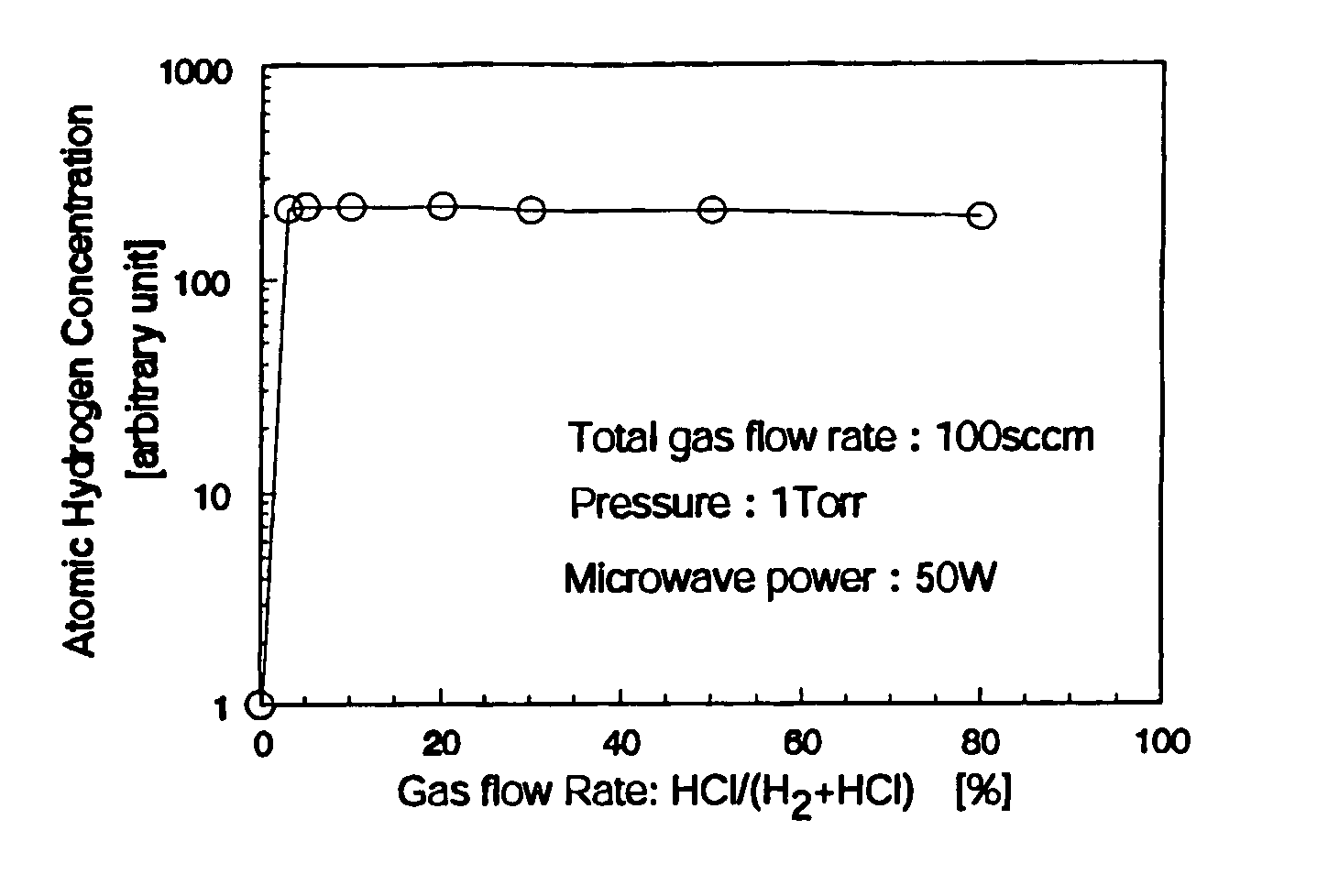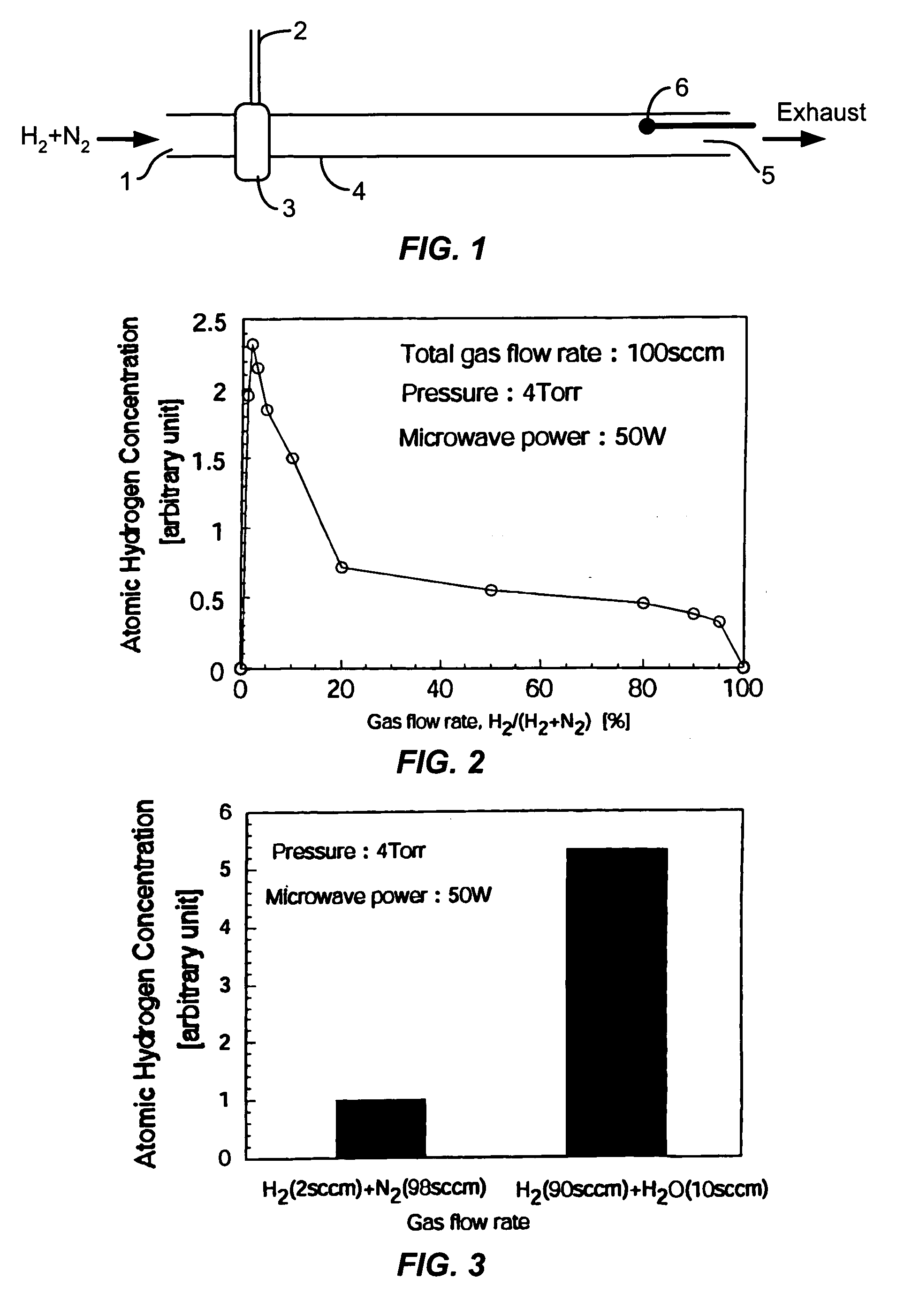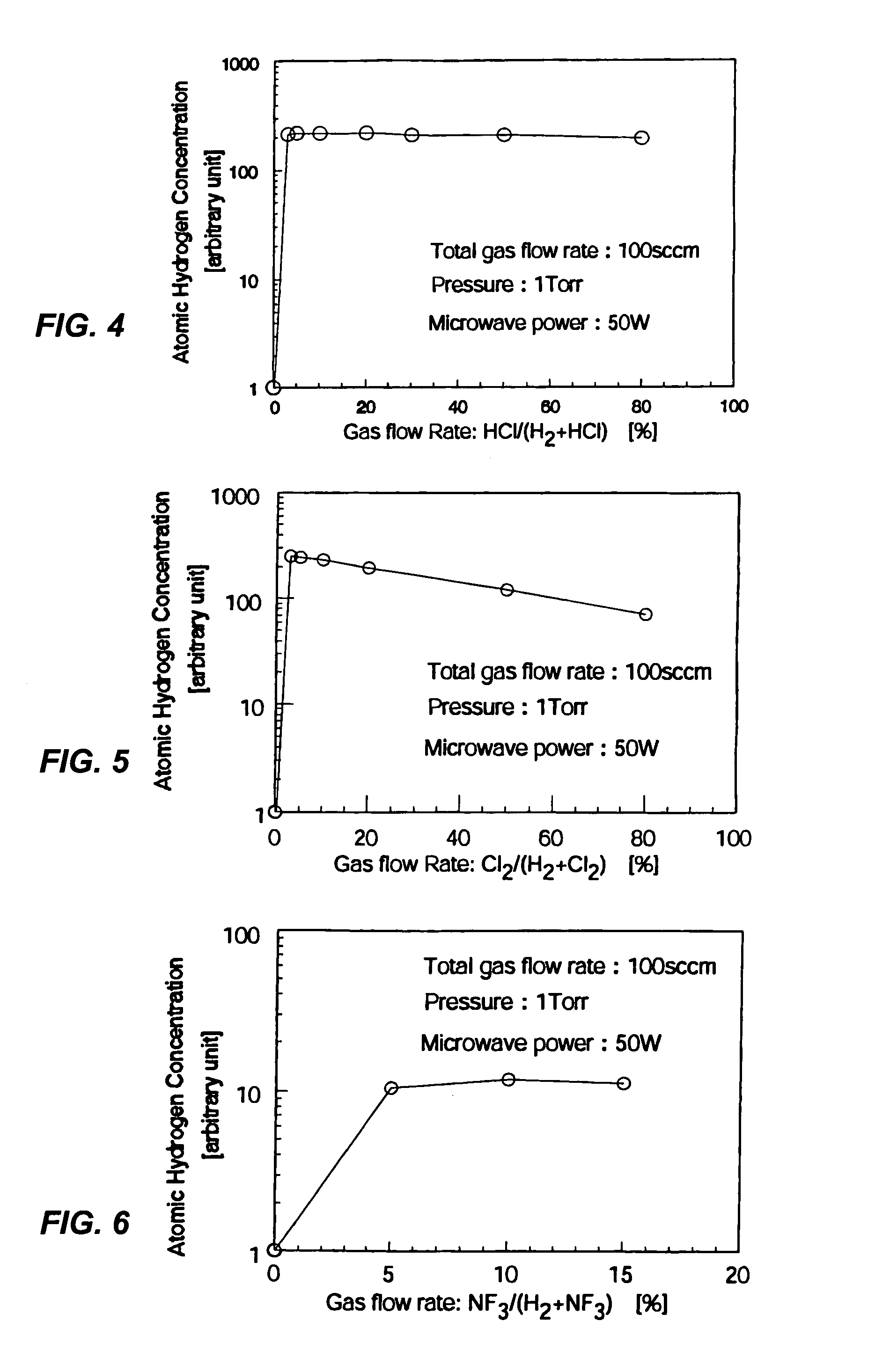Surface treatment method and equipment
a surface treatment and equipment technology, applied in the field of objects and their manufacture, can solve the problems of physical and/or electrical damage to the surface being treated, charging and physical damage to the treatment chamber itself, and the difficulty of controlling conventional plasma processing techniques
- Summary
- Abstract
- Description
- Claims
- Application Information
AI Technical Summary
Benefits of technology
Problems solved by technology
Method used
Image
Examples
examples
[0042]To prove the principle and operation of the present invention, examples have been provided. These examples are merely illustrations, which should not limit the scope of the claims herein. One of ordinary skill in the art would recognize many other variations, modifications, and alternatives. The present examples can be implemented using a tool such as the one in FIG. 7. The examples are as follows:
first example
[0043]In the present example, the present method introduces gases (i.e., H2: 90 SCCM, Cl2: 10 SCCM) as a plasma source was activated in a tool similar to the one in FIG. 7. The plasma source was activated with 500 watt 2.45 GHz microwave, but can also be at other powers. An NF3 gas (at 100 SCCM) was added at a downstream area, while 6 inch Si wafer covered by silicon native oxide film mounted on a stage in the plasma tool. The silicon wafer surface was hydrophobic after plasma processing for 3 minutes at 2 Torr., which indicates that the silicon native oxide film was removed by this processing.
[0044]As well as the above, mixed gases (i.e., H2: 9 SCCM, HCl: 10 SCCM) as the plasma source gas was activated. The plasma was maintained at 500 watt 2.45 GHz microwave. An NF3 gas (at 100 SCCM) was added at a downstream area from the plasma source. A 6 inch Si wafer covered by silicon native oxide film was mounted on the stage in the plasma tool. The silicon wafer surface was hydrophobic aft...
second example
[0045]In the present example, mixed gases (i.e., H2: 90 SCCM, Cl2: 10 SCCM) are used as the plasma source gas in a tool similar to the one in FIG. 7. This source gas was activated with a power source including 500 watts at 2.45 GHz microwave energy. Silane (i.e., SiH4) gas (at 5 SCCM) was added at downstream area from the plasma processing region. A 6 inch Si wafer covered by silicon dioxide film was mounted on the stage in the plasma processing region, which was downstream from the plasma source. Then, the wafer temperature was elevated to 450° C. and maintained at such temperature. The processing pressure was pumped down to 2 Torr and also maintained at such pressure. In the present example, a deposited film was observed on the wafer surface after the processing the wafer for 1 hour. We believe that such film was a silicon film because the silicon wafer surface was completely hydrophobic just after the processing.
PUM
| Property | Measurement | Unit |
|---|---|---|
| dissociation ratio | aaaaa | aaaaa |
| dissociation ratio | aaaaa | aaaaa |
| dissociation ratio | aaaaa | aaaaa |
Abstract
Description
Claims
Application Information
 Login to View More
Login to View More - R&D
- Intellectual Property
- Life Sciences
- Materials
- Tech Scout
- Unparalleled Data Quality
- Higher Quality Content
- 60% Fewer Hallucinations
Browse by: Latest US Patents, China's latest patents, Technical Efficacy Thesaurus, Application Domain, Technology Topic, Popular Technical Reports.
© 2025 PatSnap. All rights reserved.Legal|Privacy policy|Modern Slavery Act Transparency Statement|Sitemap|About US| Contact US: help@patsnap.com



